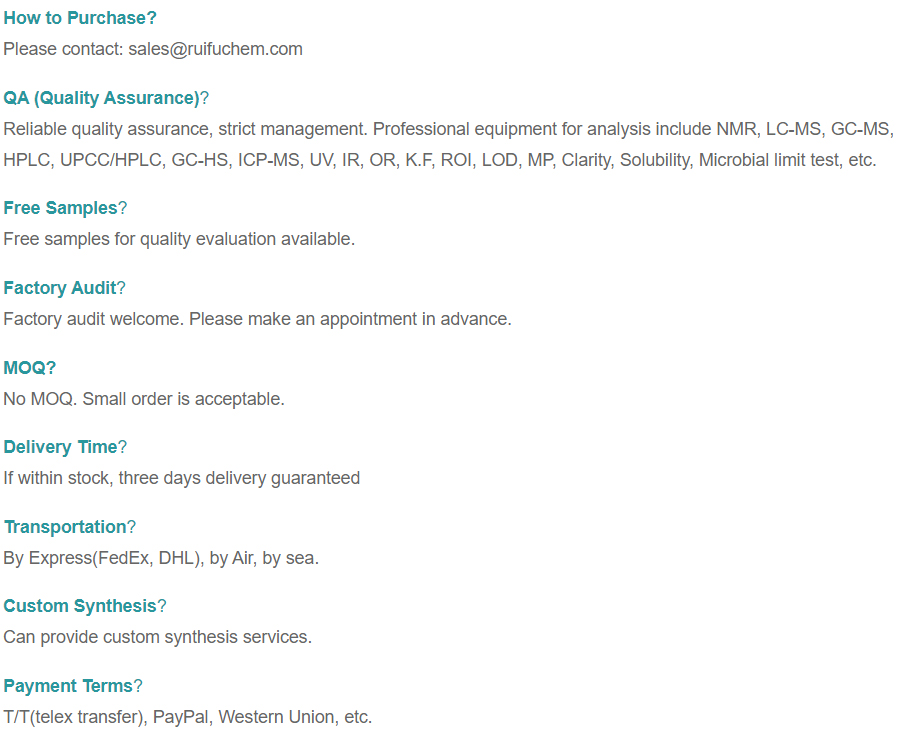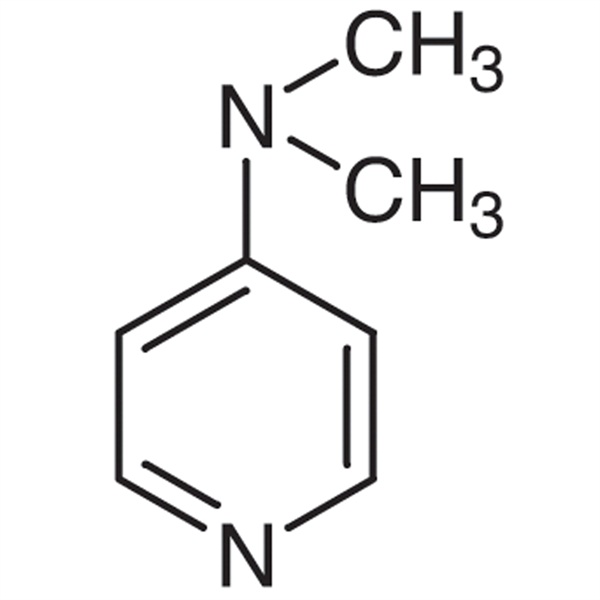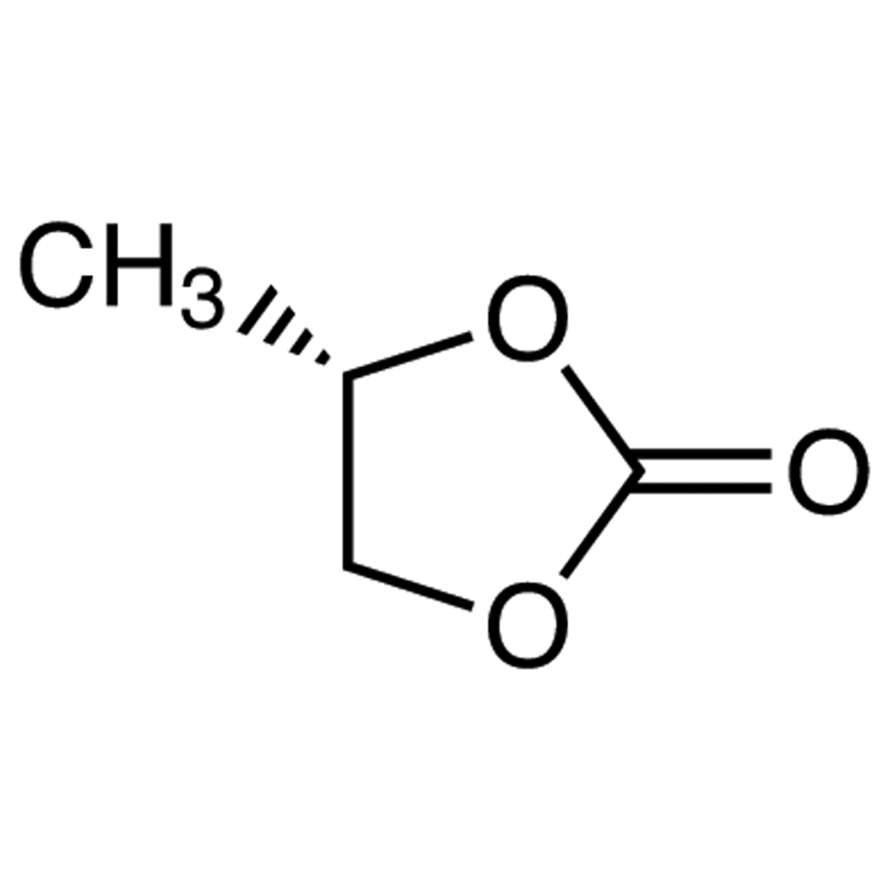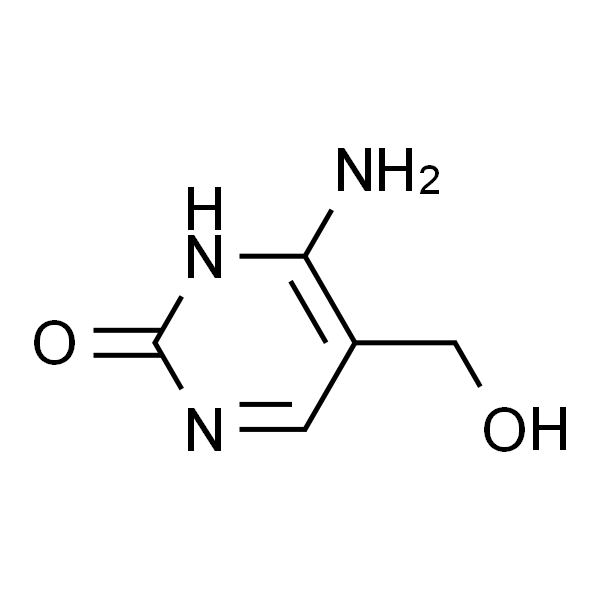Hot sale Factory Vidarabine - 4-Dimethylaminopyridine DMAP CAS 1122-58-3 Highly Efficiency Catalyst – Ruifu
Hot sale Factory Vidarabine - 4-Dimethylaminopyridine DMAP CAS 1122-58-3 Highly Efficiency Catalyst – Ruifu Detail:
Manufacturer Supply; High Purity and Competitive Price
Chemical Name: 4-Dimethylaminopyridine; DMAP
CAS: 1122-58-3
Coupling Reagents
| Chemical Name | 4-Dimethylaminopyridine |
| Synonyms | DMAP; N-(4-Pyridyl)dimethylamine |
| CAS Number | 1122-58-3 |
| CAT Number | RF-PI121 |
| Stock Status | In Stock, Production Scale Up to Tons |
| Molecular Formula | C7H10N2 |
| Molecular Weight | 122.17 |
| Density | 0.906 g/mL at 25°C |
| Refractive Index | n20/D 1.431 |
| Solubility in Methanol | Very Faint Turbidity |
| Brand | Ruifu Chemical |
| Item | Specifications |
| Appearance | White Crystalline Powder |
| Purity / Analysis Method | ≥99.0% (HPLC) |
| Melting Point | 111.0~114.0°C |
| Loss on Drying | ≤0.50% |
| Test Standard | Enterprise Standard |
| Usage | Coupling Reagents; Pharmaceutical Intermediates; Organic Synthesis |
Package: Bottle, Aluminum foil bag, Cardboard drum, 25kg/Drum, or according to customer’s requirement.
Storage Condition: Store in sealed containers at cool and dry place (≤10℃); Protect from light, moisture and pest infestation.

Shanghai Ruifu Chemical Co., Ltd. commercial supply 4-Dimethylaminopyridine; DMAP; CAS 1122-58-3 with high quality.
4-Dimethylaminopyridine; DMAP; CAS 1122-58-3 is new highly efficiency catalyst widely used in chemical synthesis. It has high catalytic capacity in organic synthesis, drug synthesis, pesticide, dye, fragrance synthesis of acylation, alkylation, etherification and other types of reaction, and has a very obvious effect on improving yield. The treatment of substrates such as alcohols, phenols and amines with acetic anhydride (or acetyl chloride) in the presence of pyridine has provided a general acetylation method since the turn of the 20th century. However, this approach often proves to be unsatisfactory for the acetylation of deactivated substrates. It was not until the late 1960’s that certain 4-dialkylaminopyridines were found (independently by two research groups)[1, 2] to be much superior to pyridine as catalysts for difficult acetylations or acylations, in general.
4-Dialkylaminopyridines were soon found to have general applicability for catalysis of a wide variety of reactions. 4-dimethylaminopyridine’s (DMAP) wide applicability has been frequently reviewed since the first review appeared in 1978. [3] The accelerating pace of reported applications for DMAP and the availability of DMAP in commercial quantities, at modest prices, have continued to stimulate great interest in its use as a catalyst in the fields of organic, polymer, analytical and biochemistry. Today there are thousands of examples of the use of DMAP in far ranging fields of chemistry in both patents and the research literature. Many full-scale production processes utilizing DMAP have been and are being operated. Several pharmaceutical and agricultural products that rely on DMAP’s superior catalytic properties in their synthetic sequences have been produced for years. Since 1976 more than 11,000 US patents have been granted which mention DMAP or dimethylaminopyridine. The functional groups and class of compounds that are involved in the reactions with DMAP include alcohols, amines, arenes, azides, carbenes, enols, epoxides, hydrazines, hydroxylamines, phenols, thiols, lipids, sugars, aminoacids, peptides, alkaloids, steroids, terpenes, and others. Reactions that have been published in the literature using DMAP fall into, but are not limited to, the following types of reactions: Acylation; Acetylation; Alkylation; Benzoylation; Bischler-Naperalski cyclization, Carbonylation; Carbo-diimidation; Cyclization; Dehydration; Esterificaton; Indole Synthesis; Nucleophilic Substitution; Rearrangement; Silylation; Sulfonamidation; Sulfonation; Tritylation; Formylation; Carbamoylation; Phosphorylation; Lactonization; Pivaloylation; Dakin-West Reaction; Baylis-Hillman Reaction.
DMAP is very soluble in methanol, ethyl acetate, chloroform, methylene chloride, 1,2-dichloroethane, acetone, and acetic acid and less soluble in cold hexane, cyclohexane, and water. DMAP can be recrystallized from ethyl acetate and PPY from pentane or hexane. The basicities of DMAP[5] and PPY in water as well as the dipole moment of DMAP[7-9] in benzene and dioxane have been determined by several groups. Of especial interest are the thermodynamic investigations concerned with the protonation of DMAP in water[11] and calculations whereby the influence of substituents on the basicity has been determined.
DMAP reacts readily with electrophilic reagents. It is possible to quaternize DMAP in high yield with either methyl iodide or ethyl bromide, decomposes quantitatively in the presence of aqueous alkali to N-methy1-4-pyridone
Product detail pictures:

Related Product Guide:
We emphasize advancement and introduce new products into the market each year for Hot sale Factory Vidarabine - 4-Dimethylaminopyridine DMAP CAS 1122-58-3 Highly Efficiency Catalyst – Ruifu , The product will supply to all over the world, such as: Nigeria, Nigeria, Libya, We have more than 10 years experience of production and export business. We always develop and design kinds of novel products to meet the market demand and help the guests continuously by updating our products. We are specialized manufacturer and exporter in China. Wherever you are, please join us, and together we will shape a bright future in your business field!
-

OEM/ODM Supplier 5 6-Diethyl-2 3-dihydro-1H-ind...
-

2021 wholesale price Phenylethylamine - (S)-(-...
-

High definition Boc-Hph-OH - Sodium Propylpara...
-

OEM China R-2-Methyl-2-Propanesulfinamide - (S...
-
![Wholesale Price China 4-[(4-Methylpiperazin-1-yl)methyl]benzoic Acid Dihydrochloride - 2-Fluoro-6-Methoxybenzoic Acid CAS 137654-21-8 Purity ≥98.5% – Ruifu](https://www.ruifuchem.com/uploads/2-Fluoro-6-Methoxybenzoic-Acid-CAS-137654-21-8.jpg)
Wholesale Price China 4-[(4-Methylpiperazin-1-y...
-

Good Quality Sorafenib Tosylate Intermediate -...
Company director has very rich management experience and strict attitude, sales staff are warm and cheerful, technical staff are professional and responsible,so we have no worry about product,a nice manufacturer.
